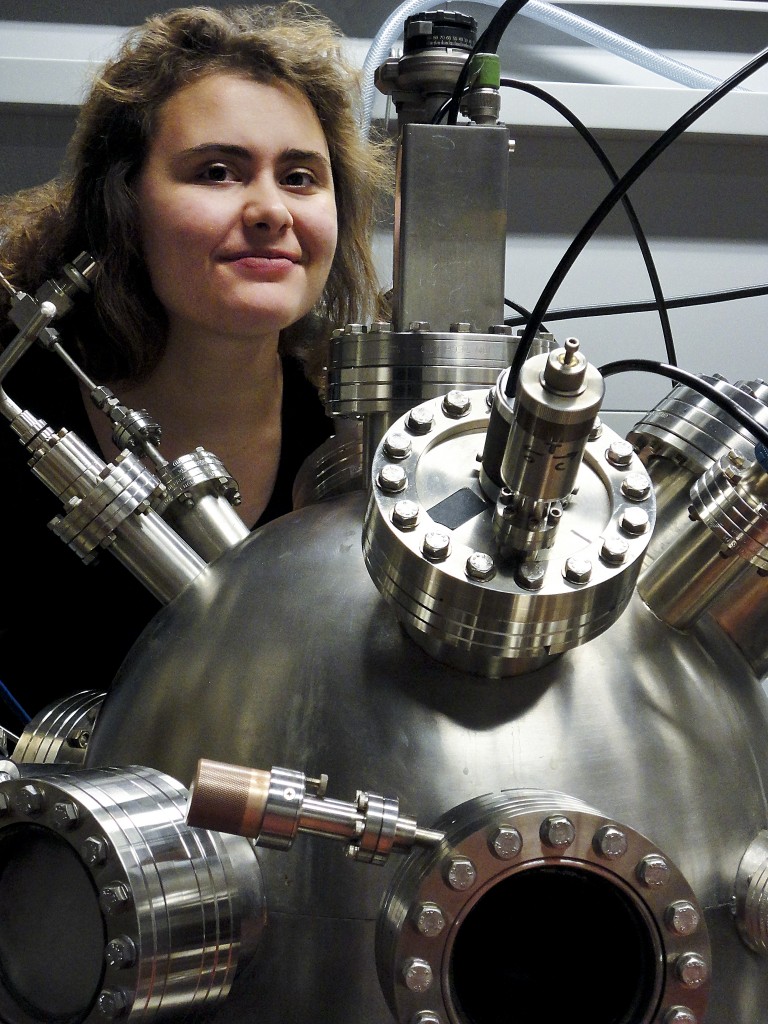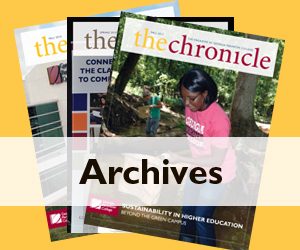by Kat Friedmann
Ralph Waldo Emerson once said, “Never lose an opportunity of seeing anything beautiful.” When Lawrenceville native Holly Tinkey first came to Georgia Perimeter College, she didn’t know what opportunities lay ahead of her, but she saw beauty in physics.
“I like science,” says Tinkey. “I’m a Christian, and I see a lot of beauty in creation and how things work, even though there’s no logical reason that they should all come together. These forces that are tiny—that you study in theory—coming together to do something useful, something that we can manipulate, something that we can put into technology and use for our advantage—I really like that.”
Tinkey came to GPC in 2006 while still a student at Central Gwinnett High School, participating in GPC’s Dual Enrollment program.
“My teachers were very good at explaining their fields,” Tinkey says about her time at GPC. “I think because I was in smaller classes with very good professors, I learned a lot more than I would have in a huge university atmosphere.”
A physics major, Tinkey transferred to Georgia Tech in 2008 and graduated in spring of 2011. She applied for two of the nation’s most prestigious scholarly awards, a National Science Foundation Graduate Research Fellowship and a Fulbright Scholarship and was awarded both.
“There’s always a way, there are always opportunities. I thought it was a really long shot that I would ever get these scholarships or fellowships that I’ve gotten,” says Tinkey.
As an undergraduate at Georgia Tech, she started lab work on a new man-made material called graphene, which would help replace silicon in computer technology. While Tinkey was drudging through late nights in the lab with the material, research on graphene in England won the 2010 Nobel Prize for Physics.
“One of the problems that computing and technology is facing in the next 10 to 20 years is that you can’t make the transistors smaller,” Tinkey says. “Some people are trying to find alternatives to silicon technology … and that’s one of the things that graphene is supposed to be.”
This theory, paired with Tinkey’s hard work, led her to prepare a proposal for research on graphene that she submitted to the National Science Foundation for a graduate research fellowship. Tinkey was one of 1,000 scholars across the nation awarded the NSF grant, which will fund her graduate school and research projects at the University of Maryland, where she begins studies this fall.
Through June, however, as the recipient of a 2011 Fulbright Scholarship, she studied in the Netherlands at Leiden University, researching how to manipulate electronics and computers using magnetic bilayers—a new field called quantum information.
“Physics research a lot of times is looking 50 years into the future,” says Tinkey.
That’s OK by her, she says. “I am finding use out of things that nature gives us.”








No Comments on “Holly Tinkey — Seeing Beauty and Opportunity in Physics”